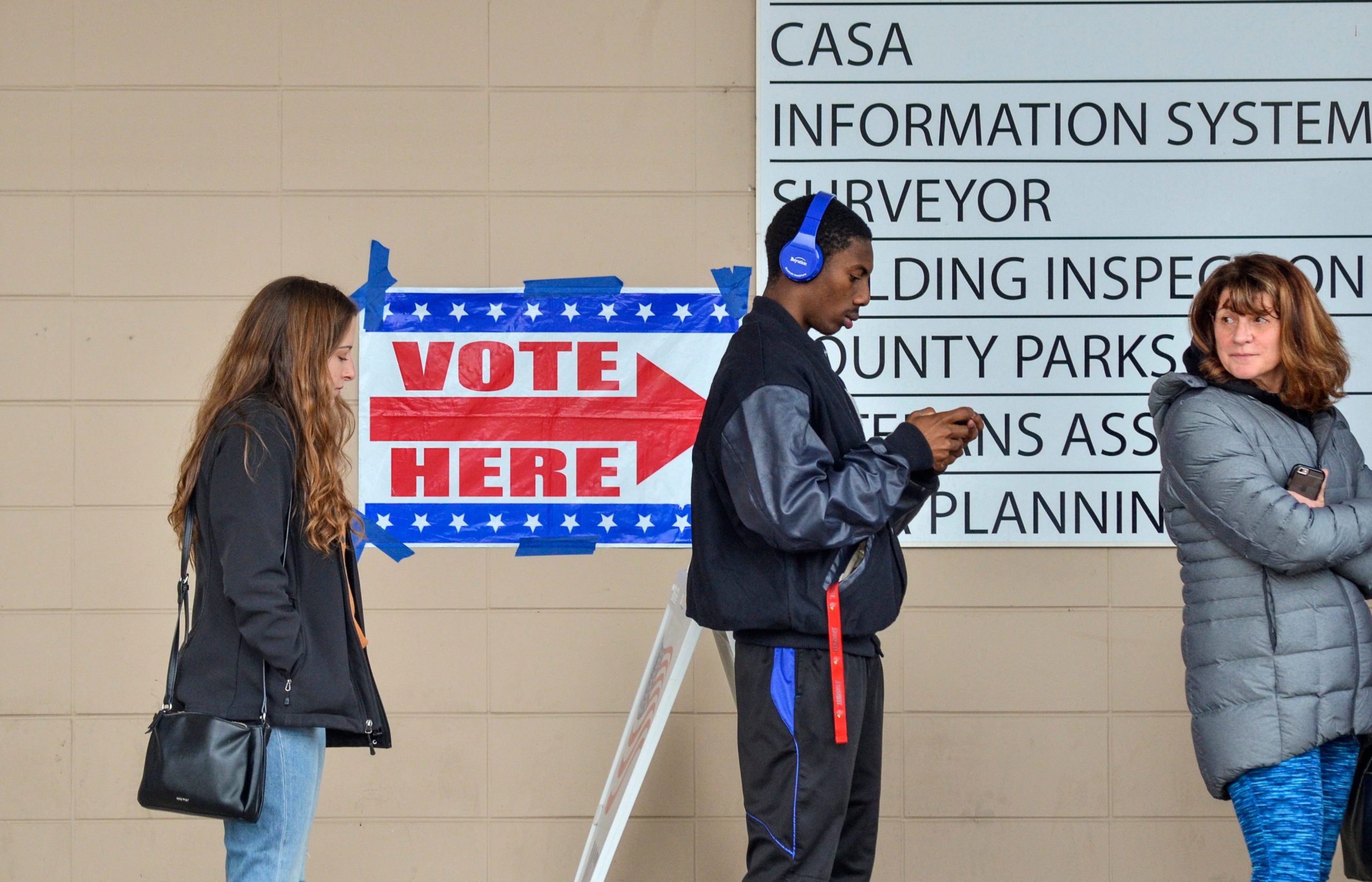| Lawrence Lessig ∙ USA TODAY |
On Thursday, election officials in Maine declared Democrat Jared Golden to be the first member of Congress elected by “ranked-choice voting” (“RCV”). Maine’s idea should now be adopted by New Hampshire for its presidential primary, and by battleground states for the general election as well.
Under Maine’s system, voters can rank their choices among the candidates on the ballot — first, second, third, etc. First choices are then tallied. If no candidate gets 50 percent or more, the bottom candidate is dropped, and the second choice of those voters gets added to the tallies of the remaining candidates. If there is still no candidate with 50 percent or more, then the procedure is repeated, until there is a candidate who has the support of at least 50 percent of the voters. The results at each stage are reported, so early leads are known. But in the end, the ultimate winner has the support of at least half of voters — not a terribly radical idea in a democracy.
”Maine is not the only jurisdiction in America to use ranked-choice voting.
In this election, the initial round had GOP incumbent Bruce Poliquin winning 46.1 percent and Golden receiving 45.9 percent. Third party candidates garnered 8 percent. After re-allocating these third party votes, the final result was 50.53 percent to 49.47 percent in favor of Golden.
Ranked-choice voting can end toxic campaigns
Maine’s system could have applied to at least six other House raises in 2018, as well as possibly two races in the Senate. In most of these cases in the House, it would have likely favored Republicans, in others it would likely have favored Democrats. But in every case, it would have given voters the chance to express their views without a strategic worry. If their number one doesn’t win, they can at least support their number two. And more importantly, voting for their number one would not weaken the chances of their number two winning.
Yet the effect on Election Day is just part of the benefit of RCV, and maybe not even the most important. Much more significant is its effect on the campaign itself. Candidates in a ranked-choice system have a real interest in playing nice. If they are unsure about whether they’ll win on the first ballot, they have a strong incentive not to denigrate or insult the candidates whose second-rank votes they might want. A clear front-runner need not behave, but everyone else will. Negative advertising can thus be costly for all except a clear frontrunner — which can change importantly how campaigns proceed.
Both features of RCV are crucially relevant to how we elect our president. Following Maine, critical states should adopt the system before the next election — for the president at least.
New Hampshire especially. On the Democratic side, there could be a dozen candidates vying to be the Democratic nominee. That means a candidate could “win” that primary with just a tiny fraction of the overall vote. Yet with RCV, voters could rank their choices, and the system would then determine which candidates have significant support among primary voters.
First round votes would be reported as well, so we’d have a clear sense of initial ranking. And candidates would be disciplined not to denigrate at least the candidates whose votes they aspire ultimately to win. The party would leave the primary not bruised but emboldened. And the ultimate nominee would not have a year of vicious attacks gifted to her or his opponent.
Protest votes impact real results
In the general election, the battleground states should adopt RCV for the presidential election as well.
Today, all but two states allocate their Electoral College votes to the winner of the popular vote. At the very minimum, states should assure that that “winner” is a candidate supported by a majority of the voters in that state. Arguably three of the past four presidents were elected because of the effect of third-party candidates on the ultimate result in the states. Ralph Nader’s (almost pathological) denial notwithstanding, that was certainly the case in 2000 when George Bush won by 537 votes in Florida while 97,488 votes were cast for Nader. It’s at least plausible that a similar dynamic elected Bill Clinton in 1992 , and Donald Trump in 2016 .
Yet Maine shows there’s no need to undermine the mandate of a president by making the results turn upon such accidents. Battleground states could adopt RCV, making it easier for voters to vote for a third-party candidate without worrying about how that vote will affect the ultimate bottom line. Of those 97,488 Nader voters in 2000, Al Gore would surely have received more than 537 votes more than Bush. There is no reason the election system should force them either to vote for their second choice or help throw the election to their third.
Maine is not the only jurisdiction in America to use ranked-choice voting. It is just the first where it has mattered in a federal election. We should follow its example. There is plenty of time to carry its idea to the 2020 election and give all of us a system less prone to the vicious attacks, and more guaranteed to select candidates supported by at least a majority in every state.
Lawrence Lessig is Roy L Furman professor of law and leadership at Harvard law school and founder of EqualCitizens.US . Follow him on Twitter @lessig .






